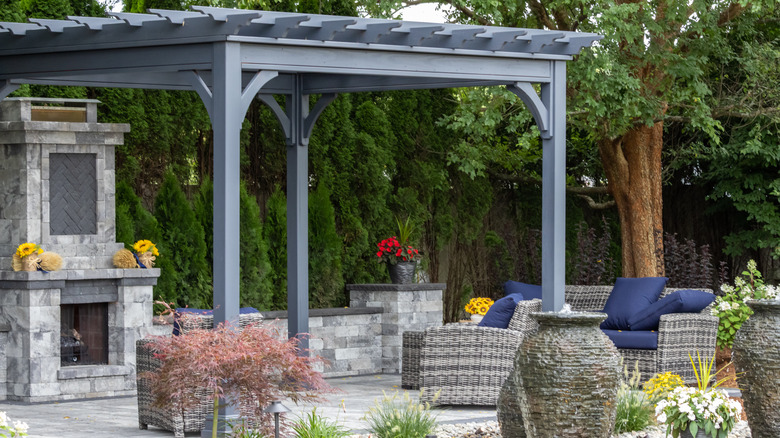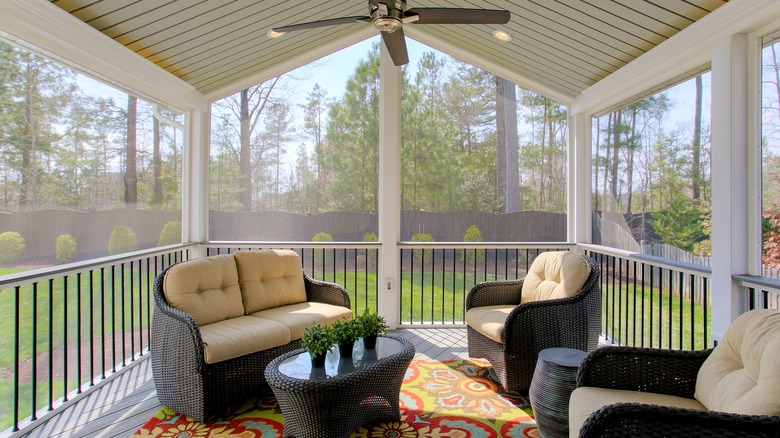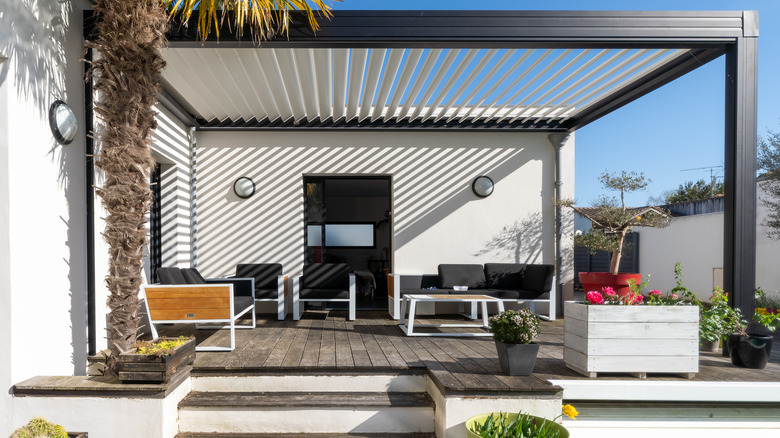The Backyard Real Estate Rule That Most Luxury Homes Ignore
Backyards are no longer just for vegetable patches and flower beds. They're quickly becoming a place where many people like to do their entertaining, especially as the outdoor-indoor living trend becomes more mainstream. Patios and decks are becoming natural extensions of the home, doubling as extended living or dining rooms. Because of this, one real estate rule of thumb is that screening in such areas helps add value to your home. This keeps pesky mosquitoes away when you're trying to enjoy sunset cocktails and flies out when you're hosting an outdoor dinner party. It also opens the possibility of being able to use the space during off-seasons, such as winter for colder climates or rainy season for warmer ones. However, if it boosts value, why don't you see luxury homes embracing the feature?
If you visit a luxury home open house, you'll see sprawling outdoor areas, but all of them are wide open rather than screened. And there is a good reason for that: luxury often focuses on appearance, not function. "Luxury homes ... often skip the screened-in option because the goal is to maximize views and integrate the landscape with the living space. Instead, you'll see features like pergolas, high-end outdoor kitchens, and infinity pools (bug-repelling plants are potentially incorporated into the exterior design)," Dutch Mendenhall, real estate investor and CEO of RAD Diversified, exclusively tells House Digest. "These elements reflect a focus on aesthetics and lifestyle, where the view is prioritized over functionality." Here is a closer look at whether a screened-in porch is beneficial to add to your property.
Benefits of a screened-in patio
While it might not scream "luxury," there are some obvious benefits to screened-in patios that might outweigh aesthetics. Specifically, they make pests less of an issue and allow you to enjoy your outdoor spaces even if the weather forecast isn't ideal. "They keep mosquitoes out, provide shade, and allow homeowners to enjoy the outdoors without dealing with the heat or rain," Mendenhall exclusively tells House Digest. Even HGTV stars embrace the look, like the time Jenny Marrs created a screened-in patio for her clients to keep the bugs out on their rural property.
Because of this, these porches can add some value to your home, especially if you live in a state that prioritizes indoor-outdoor living, like California or Florida. "Depending on the design and quality, it can increase a home's resale value by 3-5%. However, the real value comes from making the outdoor space more livable year-round," Mendenhall notes. Patios are usually seen as a summer staple, but if they can be extended into fall and winter season, they quickly become more valuable to potential buyers, making your home slightly more attractive than competing listings.
Drawbacks of screened-in patios
While screened-in patios offer a lot of perks, there are also some key drawbacks to consider. Primarily, they can block your view of the outdoors, making you feel more inside than outside, ruining the idea of "inside-outside living." Having a dark screen separating you from your beautiful yard puts a barrier between you and nature. Mendenhall adds in an exclusive interview with House Digest, "... things like the cost can be a disadvantage ... as it can be quite expensive. You'll also need to make sure you take care of it, so whilst it can keep your garden clean, you do need to ensure the screen is all good throughout the year."
Luxury homes rely on different structures on the patio to provide the same amount of shade and weather protection. In addition to pergolas, some other options are retractable glass walls, cabanas, and patios with retractable roofs. They give you some shelter without getting in the way of connecting with the outdoors.


